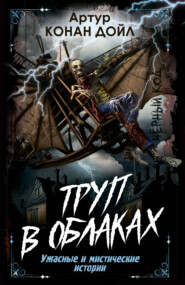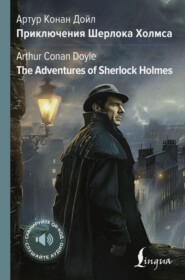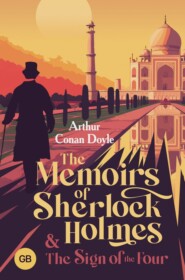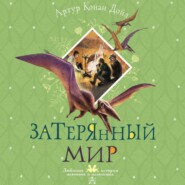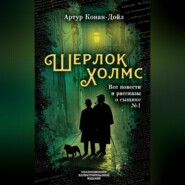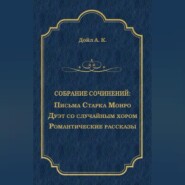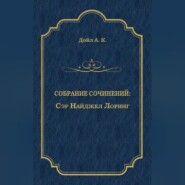По всем вопросам обращайтесь на: info@litportal.ru
(©) 2003-2024.
✖
The Lost World / Затерянный мир
Настройки чтения
Размер шрифта
Высота строк
Поля
“I could see nothing unusual.”
“Try the next page,” said he with a smile.
It was a full-page sketch of a landscape in colour… the kind of painting which an open-air artist takes as a guide to a future more elaborate effort. I could see high hills covered with light-green trees. Above the hills there were dark red cliffs. They looked like an unbroken wall. Near the cliffs there was a pyramidal rock, crowned by a great tree. Behind it all, a blue tropical sky.
“Well?” he asked.
“It is no doubt a curious formation,” said I “but I am not geologist enough to say that it is wonderful.”
“Wonderful!” he repeated. “It is unique. It is incredible. No one on earth has ever dreamed of such a possibility. Now the next.”
I turned it over, and gave an exclamation of surprise. There was a full-page picture of the most extraordinary creature that I had ever seen. It was the wild dream of an opium smoker. The head was like that of a bird, the body that of a large lizard. The tail was covered with sharp spikes. In front of this creature there was a small man, or dwarf, who stood looking at it.
“Well, what do you think of that?” cried the Professor, rubbing his hands with triumph.
“It is monstrous… grotesque.”
“But what made him draw such an animal?”
“Gin, I think.”
“Oh, that’s the best explanation you can give, is it?”
“Well, sir, what is yours?”
“The creature exists. That is actually sketched from the life.”
I should have laughed only that I remembered our Catharine-wheel down the passage.
“No doubt,” said I, “no doubt… But this tiny human figure puzzles me. If it were an Indian we could set it down as evidence of some pigmy race in America, but it is a European.”
“Look here!” he cried, “You see that plant behind the animal; I suppose you thought it was a flower? Well, it is a huge palm. He sketched himself to give a scale of heights.”
“Good heavens!” I cried. “Then you think the beast was so huge…”
I had turned over the leaves but there was nothing more in the book.
“… a single sketch by a wandering American artist. You can’t, as a man of science, defend such a position as that.”
For answer the Professor took a book down from a shelf.
“There is an illustration here which would interest you. Ah, yes, here it is! It is said: ‘… Jurassic Dinosaur Stegosaurus. The leg is twice as tall as a full-grown man.’ Well, what do you think of that?”
He handed me the open book. I looked at the picture. In this animal of a dead world there was certainly a very great resemblance to the sketch of the unknown artist.
“Surely it might be a coincidence…”
“Very good,” said the Professor, “I will now ask you to look at this bone.” He handed over the one which he had already described as part of the dead man’s possessions. It was about six inches long, and thicker than my thumb.
“To what known creature does that bone belong?” asked the Professor.
I examined it.
“It might be a very thick human collar-bone,[24 - collar-bone – ключица]” I said.
“The human collar-bone is curved. This is straight.”
“Then I don’t know what it is.”
He took a little bone the size of a bean out of a pill-box.
“This human bone is the analogue of the one which you hold in your hand. That will give you some idea of the size of the creature. What do you say to that?”
“Maybe an elephant…”
“Don’t! Don’t talk of elephants in South America! It belongs to a very large, a very strong animal which exists upon the face of the earth. You are still unconvinced?”
“I am at least deeply interested.”
“Then your case is not hopeless. We will proceed with my narrative. I could hardly come away from the Amazon without learning the truth. There were indications as to the direction from which the dead traveller had come. Indian legends would alone have been my guide, for I found that rumours of a strange land were common among all the tribes. Have you heard of Curupuri?”
“Never.”
“Curupuri is the spirit of the woods, something terrible, something to be avoided. It is a word of terror along the Amazon. Now all tribes agree as to the direction in which Curupuri lives. It was the same direction from which the American had come. Something terrible lay that way. It was my business to find out what it was.”
“I got two of the natives as guides. After many adventures we came at last to a tract of country which has never been described or visited except by the artist Maple White. Would you look at this?”
He handed me a photograph.
“This is one of the few which partially escaped – on our way back our boat was upset. There was talk of faking. I am not in a mood to argue such a point.”
The photograph was certainly very off-coloured. It represented a long and enormously high line of cliffs, with trees in the foreground.
“The same place as the painted picture…” said I.
“Yes,” the Professor answered. “We progress, do we not? Now, will you please look at the top of that rock? Do you observe something there?”
“An enormous tree.”
“But on the tree?”
“A large bird,” said I.
He handed me a lens.
“Yes,” I said, looking through it, “a large bird stands on the tree. It has a great beak. A pelican?”
“It may interest you that I shot it. It was the only absolute proof of my experiences.”
“Try the next page,” said he with a smile.
It was a full-page sketch of a landscape in colour… the kind of painting which an open-air artist takes as a guide to a future more elaborate effort. I could see high hills covered with light-green trees. Above the hills there were dark red cliffs. They looked like an unbroken wall. Near the cliffs there was a pyramidal rock, crowned by a great tree. Behind it all, a blue tropical sky.
“Well?” he asked.
“It is no doubt a curious formation,” said I “but I am not geologist enough to say that it is wonderful.”
“Wonderful!” he repeated. “It is unique. It is incredible. No one on earth has ever dreamed of such a possibility. Now the next.”
I turned it over, and gave an exclamation of surprise. There was a full-page picture of the most extraordinary creature that I had ever seen. It was the wild dream of an opium smoker. The head was like that of a bird, the body that of a large lizard. The tail was covered with sharp spikes. In front of this creature there was a small man, or dwarf, who stood looking at it.
“Well, what do you think of that?” cried the Professor, rubbing his hands with triumph.
“It is monstrous… grotesque.”
“But what made him draw such an animal?”
“Gin, I think.”
“Oh, that’s the best explanation you can give, is it?”
“Well, sir, what is yours?”
“The creature exists. That is actually sketched from the life.”
I should have laughed only that I remembered our Catharine-wheel down the passage.
“No doubt,” said I, “no doubt… But this tiny human figure puzzles me. If it were an Indian we could set it down as evidence of some pigmy race in America, but it is a European.”
“Look here!” he cried, “You see that plant behind the animal; I suppose you thought it was a flower? Well, it is a huge palm. He sketched himself to give a scale of heights.”
“Good heavens!” I cried. “Then you think the beast was so huge…”
I had turned over the leaves but there was nothing more in the book.
“… a single sketch by a wandering American artist. You can’t, as a man of science, defend such a position as that.”
For answer the Professor took a book down from a shelf.
“There is an illustration here which would interest you. Ah, yes, here it is! It is said: ‘… Jurassic Dinosaur Stegosaurus. The leg is twice as tall as a full-grown man.’ Well, what do you think of that?”
He handed me the open book. I looked at the picture. In this animal of a dead world there was certainly a very great resemblance to the sketch of the unknown artist.
“Surely it might be a coincidence…”
“Very good,” said the Professor, “I will now ask you to look at this bone.” He handed over the one which he had already described as part of the dead man’s possessions. It was about six inches long, and thicker than my thumb.
“To what known creature does that bone belong?” asked the Professor.
I examined it.
“It might be a very thick human collar-bone,[24 - collar-bone – ключица]” I said.
“The human collar-bone is curved. This is straight.”
“Then I don’t know what it is.”
He took a little bone the size of a bean out of a pill-box.
“This human bone is the analogue of the one which you hold in your hand. That will give you some idea of the size of the creature. What do you say to that?”
“Maybe an elephant…”
“Don’t! Don’t talk of elephants in South America! It belongs to a very large, a very strong animal which exists upon the face of the earth. You are still unconvinced?”
“I am at least deeply interested.”
“Then your case is not hopeless. We will proceed with my narrative. I could hardly come away from the Amazon without learning the truth. There were indications as to the direction from which the dead traveller had come. Indian legends would alone have been my guide, for I found that rumours of a strange land were common among all the tribes. Have you heard of Curupuri?”
“Never.”
“Curupuri is the spirit of the woods, something terrible, something to be avoided. It is a word of terror along the Amazon. Now all tribes agree as to the direction in which Curupuri lives. It was the same direction from which the American had come. Something terrible lay that way. It was my business to find out what it was.”
“I got two of the natives as guides. After many adventures we came at last to a tract of country which has never been described or visited except by the artist Maple White. Would you look at this?”
He handed me a photograph.
“This is one of the few which partially escaped – on our way back our boat was upset. There was talk of faking. I am not in a mood to argue such a point.”
The photograph was certainly very off-coloured. It represented a long and enormously high line of cliffs, with trees in the foreground.
“The same place as the painted picture…” said I.
“Yes,” the Professor answered. “We progress, do we not? Now, will you please look at the top of that rock? Do you observe something there?”
“An enormous tree.”
“But on the tree?”
“A large bird,” said I.
He handed me a lens.
“Yes,” I said, looking through it, “a large bird stands on the tree. It has a great beak. A pelican?”
“It may interest you that I shot it. It was the only absolute proof of my experiences.”






